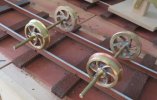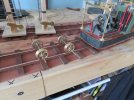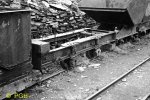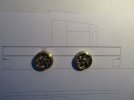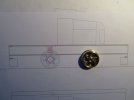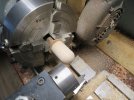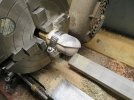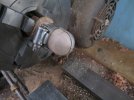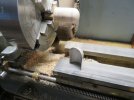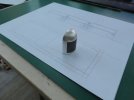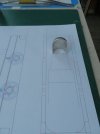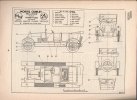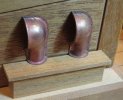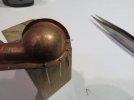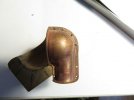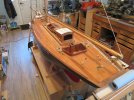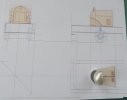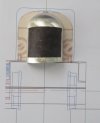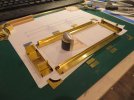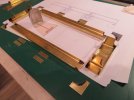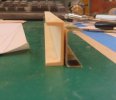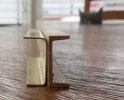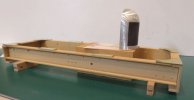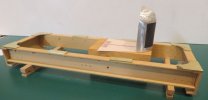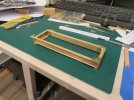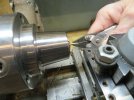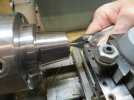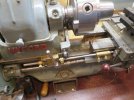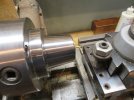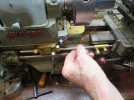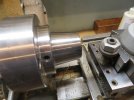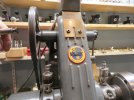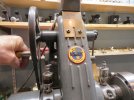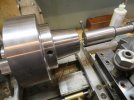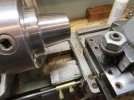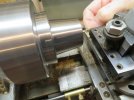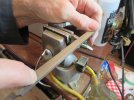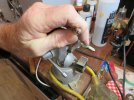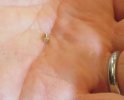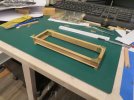michael mott
Western Thunderer
I have wanted to build a model of this locomotive for some time now. Simon Harris of Model Earth has done a kit that is representative in 7/8th scale. But it hides the wheels, and I rather like the curly spoke wheels that are on the real loco. The other reason for wanting to build this model is because when I was growing up on Twyford Avenue in west London, across the street a wonderful couple Mr and Mrs Richardson would take a "motorcar ride" every Sunday morning rain or shine in their Bullnose Morris Cowley like this one it had a cone drive and was immaculate. Their house still had gas lighting, and as kids we would often go and ask them if they had a shilling for 2 sixpences for our electric meter, they always had one.
There were a number of petrol locomotives at the Penrhyn Quarry and No 5 was still running in 1960.
I have done a drawing which I cobbled together from the couple of photographs in the special publication on the Penrhyn Quarry done by the 16mm association. I also wanted to build it to 7/8th scale.
Bob Gamble did a nice model in 16mm
So the first order of business is to make some curly spoke wheels, that fit my drawing. I decided to use brass because I have some and it is easy to work with. I started with the rims and hubs and turned up some rounded rings for making the spokes.
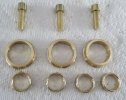
I opted for 6 spokes because it was easy to divide the spin indexer by 6 and impossible to use it to make 7. I cut grooves into the hubs and also a shallow scallop into the backside of the rims as locators for the curved spokes.
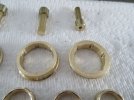
By trial and error I made the first couple of spokes to test the concept. The next thing to do was make some jigs for setting up the finessing of the spokes and to ensure that they were all basically the same. Doing this stuff manually can be tedious but I only have manual machines and hand tools.
I worked out four operations for the shaping of the spokes and made some maple positioning jigs to set the spokes in my little vice that I made as an apprentice toolmaker 50 odd years ago.
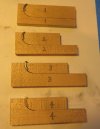
#1 ensures that the spoke is the correct length.
#2 is for setting the angle and projecting amount to file the relief on the front edge.
#3 is for setting the correct angle and projection for filing the curved end to match the rim.
#4 is to set the angle and projection to file the slight bevel at the hub end.
An Applewood holding jig was turned up and left in the three jaw chuck to ensure everything was concentric after soldering up the assembly. The hub was glued with ACC glue to a 1/4 inch shaft for the duration of the assembly process.
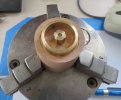
I did not take any pictures of the step before soldering. I used soft solder and the hot air gun to heat up the assembly. it does look ugly I couldn't find my invisible solder.
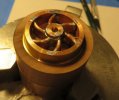
However it cleaned op well and I used enough solder to create the filleting at the rim.
and placed over the drawing.
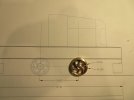
Another journey begun.
Michael
There were a number of petrol locomotives at the Penrhyn Quarry and No 5 was still running in 1960.
I have done a drawing which I cobbled together from the couple of photographs in the special publication on the Penrhyn Quarry done by the 16mm association. I also wanted to build it to 7/8th scale.
Bob Gamble did a nice model in 16mm
So the first order of business is to make some curly spoke wheels, that fit my drawing. I decided to use brass because I have some and it is easy to work with. I started with the rims and hubs and turned up some rounded rings for making the spokes.

I opted for 6 spokes because it was easy to divide the spin indexer by 6 and impossible to use it to make 7. I cut grooves into the hubs and also a shallow scallop into the backside of the rims as locators for the curved spokes.

By trial and error I made the first couple of spokes to test the concept. The next thing to do was make some jigs for setting up the finessing of the spokes and to ensure that they were all basically the same. Doing this stuff manually can be tedious but I only have manual machines and hand tools.
I worked out four operations for the shaping of the spokes and made some maple positioning jigs to set the spokes in my little vice that I made as an apprentice toolmaker 50 odd years ago.

#1 ensures that the spoke is the correct length.
#2 is for setting the angle and projecting amount to file the relief on the front edge.
#3 is for setting the correct angle and projection for filing the curved end to match the rim.
#4 is to set the angle and projection to file the slight bevel at the hub end.
An Applewood holding jig was turned up and left in the three jaw chuck to ensure everything was concentric after soldering up the assembly. The hub was glued with ACC glue to a 1/4 inch shaft for the duration of the assembly process.

I did not take any pictures of the step before soldering. I used soft solder and the hot air gun to heat up the assembly. it does look ugly I couldn't find my invisible solder.

However it cleaned op well and I used enough solder to create the filleting at the rim.
and placed over the drawing.

Another journey begun.
Michael

